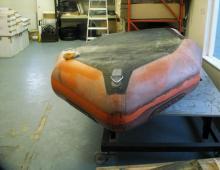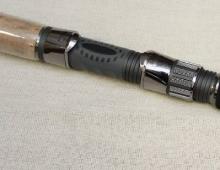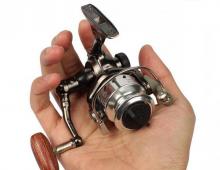Perch fishing in winter
The massively distributed perch is an excellent prey for fans of winter fishing. Not only is it unpretentious and lives in almost any body of water, it also remains active throughout the year. Although the average size of fish ranges from 100 to 300 grams, catching perch is a pleasure even for experienced anglers. It is all the more exciting to get a striped predator with the help of such bait as a mormyshka.
Choosing a place to catch perch in winter
Before you start drilling holes, you should choose the right place. The best option is to ask local fishermen who will tell you where to catch and tell you about the behavior of perch in this reservoir. Otherwise, you need to carefully study the habits of a striped predator in winter.
1. The beginning of winter.
Like many other fish species, perch remain active for the first three weeks after ice formation. Behavior practically does not differ from autumn and active biting remains.
Feeding places:
- blockages of stones and tree trunks;
- barbed areas;
- the tops of the eyebrows;
- places with elevation changes;
- areas close to coastal reed beds.
2. Midwinter.
With an increase in the thickness of the ice cover and a decrease in water temperature, the amount of oxygen decreases and the fish move to deeper places and areas with the current, where the amount of dissolved oxygen is higher. Particular attention should be paid to deep pits and flooded channels of streams and rivers, where there is a not too fast current.
3. End of winter.
With the approach of spring, the perch begins to prepare for spawning and starts active feeding. It moves after flocks of fry, so it should be caught near the mouths of streams, places where melt water is poured and in shallow water.
Tackle for fishing
For each type of bait, you need to select the appropriate gear. When catching perch on a jig from the ice, the success of fishing depends on the correct game of the bait and tackle plays a primary role in this. The main rule is that perch fishing tackle should be sensitive and thin, otherwise you can simply not see the bites of small fish.
1. Fishing rod.
An ordinary fishing rod for winter fishing, 30-35 cm long, is enough. It is very convenient to use a “balalaika” - a ready-made fishing rod equipped with a reel, which is attached to the end of the rod. The angler holds on to it while fishing.
2. Nod.
The length is small, about 5 cm. You can buy it at a fishing store or do it yourself. The main thing to remember is that it must correspond to the weight of the mormyshka and not bend under its weight by more than 30-35 degrees. It is better to stock up on a few nods - in the process of fishing, you often have to use lures of various sizes and weights.
3. Coil.
Absolutely any - there are no requirements. But it is better to use a simple small reel to lighten the tackle. In the case of the “balalaika”, it is already installed, and often fishermen prefer a simple reel for winding fishing line.
4. Fishing line.
It is necessary to select the thinnest diameter to ensure high-quality play with a light mormyshka. In addition, perch become more cautious in winter and a thick fishing line can scare them away. Sometimes the thickness of the fishing line is underestimated to 0.06 mm, but it is better to take a monofilament 0.10-0.12 mm in diameter. If a perch weighing more than a kilogram is found in a pond, then you can use a fishing line and 0.20 mm.
Winter mormyshki for perch
A mormyshka, popular among fishermen, is a small bait consisting of a body and one or two hooks soldered into it. The body is made of tin, lead or tungsten and has a variety of shapes.
All mormyshki are divided into two types:
winderless (non-attached);
with a seat.
In the first case, the fish is caught on an empty hook. In the second, bait is used.
For experienced anglers who prefer active sports fishing, reelless ones are suitable - here everything is decided only by high-quality bait play. In any case, you need to have both types of jig with you - the winter perch is quite capricious and it is difficult to guess its preferences.
Lure characteristics
 It is no secret that the bait should be selected based on the preferences of the fish, its size, fishing conditions and other factors. When choosing a mormyshka for perch fishing in winter, you need to be guided by the following parameters:
It is no secret that the bait should be selected based on the preferences of the fish, its size, fishing conditions and other factors. When choosing a mormyshka for perch fishing in winter, you need to be guided by the following parameters:
1. Bait weight largely depends on the depth of fishing. So, for fishing in shallow water, the smallest mormyshkas with a weight of 0.1-0.15 grams are used. At great depths (3-4 meters or more), the bait must weigh over 0.3 grams in order to quickly sink to the bottom. With the same size, the weight of mormyshkas may differ if they are made of different materials.
Separation of metals used for the manufacture of mormyshkas, by specific gravity from small to large:
1) tin;
2) lead;
3) tungsten.
2. Mormyshka size also depends on the size of the fish. For perch, the optimal size is 1-4 mm.
3. Plays an important role lure color but opinions differ here. This is because predator preferences can easily change under different conditions:
At great depths, where there is little light, it is preferable to use copper and gold-colored mormyshki. If the depth is more than 9-10 meters, then the color can be any - the perch catches only the movement of the bait in the water.
In cloudy weather, it is better to take bright mormyshkas, on a sunny day - dull ones.
The most catchy are the baits of green, yellow and purple shades.
4. Basic jig models:
- "Heck";
- "Balda";
- "Larva";
- "Cat's eye";
- "Drobinka".
- "Goat".
As the weather conditions change during the winter, the flavors of perch can also change. In the first ice, you can take almost any mormyshka - the perch actively bites even on large baits with and without bait.
The decrease in perch activity in the dead of winter makes it necessary to catch only the smallest mormyshkas.
Closer to spring, despite the increase in fish activity, small baits remain more catchy.
Advantages of mormyshki
Each gear has its own characteristics. The popularity of mormyshki remains high due to the following advantages:
1. The potential of the bait is very high and only the ability of the fisherman to use the tackle affects its catchability.
2. Even with a small bait, you can catch a large perch. Its size is not of paramount importance.
3. The fishing process takes place with the direct participation of the angler, which is ideal for fans of sport fishing.
Bait
 To better attract fish, mormyshkas are often used, on which bait can be planted.
To better attract fish, mormyshkas are often used, on which bait can be planted.
The best baits for catching perch on mormyshka from ice:
A piece of fish meat with a fin, preferably perch;
Red worm;
Larvae of dragonflies and caddisflies;
Perch eye with whole iris.
The last nozzle is considered the best, but rarely used, since few fishermen dare to extract the eyes from a live fish. Not to mention the fact that in the cold it is extremely difficult to do this.
Lure
It is very useful to lure holes to attract the attention of a predator. There are several proven methods:
1. A transparent glass jar is taken, filled with water and a live fry is launched inside. Next, the jar is closed with a lid and lowered to the bottom of the hole on a fishing line.
2. The simplest is to pour a pinch of bloodworm into the water, lowering the mormyshka after it.
3. Perch goes well with the smell of blood. To lure him is very simple - fresh blood of a bird or animal is poured into a medical rubber glove, then a puncture is made in it and the bait sinks to the bottom. Blood gradually comes out of the puncture and, spreading in the water, attracts perch.
4. Instead of a bloodworm, you can throw pieces of fish and a worm chopped into pieces into the hole.
Technique for catching perch on a mormyshka in winter
There are many options for playing mormyshka. Each angler with experience develops his own fishing technique, and many easily change the way of guiding gear directly in the process of fishing, reacting to the behavior of the fish.
Basic playing techniques the following:
1. The mormyshka touches the bottom, making small oscillations from side to side during the dive. After a short pause, it is raised by 20 cm without stopping fluctuations and lowered again, stopping 3-5 cm from the bottom level. When repeating the cycles, you should raise the bait higher and higher - by 10-15 cm each time. Such a game is called high-frequency and helps to lure fish if it is far from the fishing point. Usually bite happens during a pause.
2. Pre-measure the depth of the hole. Further, the bait at a distance of 1 meter from the ground and smoothly sinks to the bottom. At this point, you need to slightly shake the rod. Further touching the bottom and a short pause. Here you need to be careful, as bite can occur. In its absence, the mormyshka is raised by half a meter and, having accelerated the oscillations, is lowered again. Thus, 5-7 cycles are produced.
3. At the end of winter, when the perch, following the fry of fry, increasingly rises to the surface, fishing begins at a distance of a meter from the ice level. After touching the ground with a jig, they knock on the ground, raising a muddy cloud, reminiscent of the perch swarming of small fish in search of food. After 2-3 taps, there is a pause and a few more taps. Then the bait is slowly and smoothly raised by 15 cm and lowered. The cycles are repeated after 20-25 seconds.
The height and speed of lifting the bait, the frequency of cycles and the length of pauses can change in the process. You should improvise and not be afraid of experiments to select the optimal tackle game.
When choosing the size of a mormyshka, one should be guided by the rule: a weak bite is a small size, an active bite is large.
The more mormyshki you take with you, the better. Perch are quite picky in winter, so it will be difficult to guess with the model.
For beginners, it is better to use additional bait - until the playing technique is perfected, bait will help to attract fish better.
The problem of choosing the color of the bait will help to solve a set of colored markers - it can be quickly repainted right on the pond.
If you cut with your hand, then a thin fishing line will not break even when hooking a large perch - “humpback”.
Attaching the lure to the clasp tied at the end of the fishing line will help you quickly change the bait in the cold.
The catchability of the mormyshka is easy to increase with the help of colored beads and cambric dressed on the hook.
For fishing to be successful, it is worth making at least a dozen holes.
It is more convenient to pull out prey if you intercept the fishing line with your hands. So the perch can be more accurately brought to the hole of the hole, without giving the opportunity to get off the hook.
Hooks must be sharp - this will facilitate hooking and protect fish from gathering.
If the first mormyshka fishing was not very successful, do not despair. This bait requires constant practice and over time this method of fishing can bring not only pleasure, but also a great catch.



